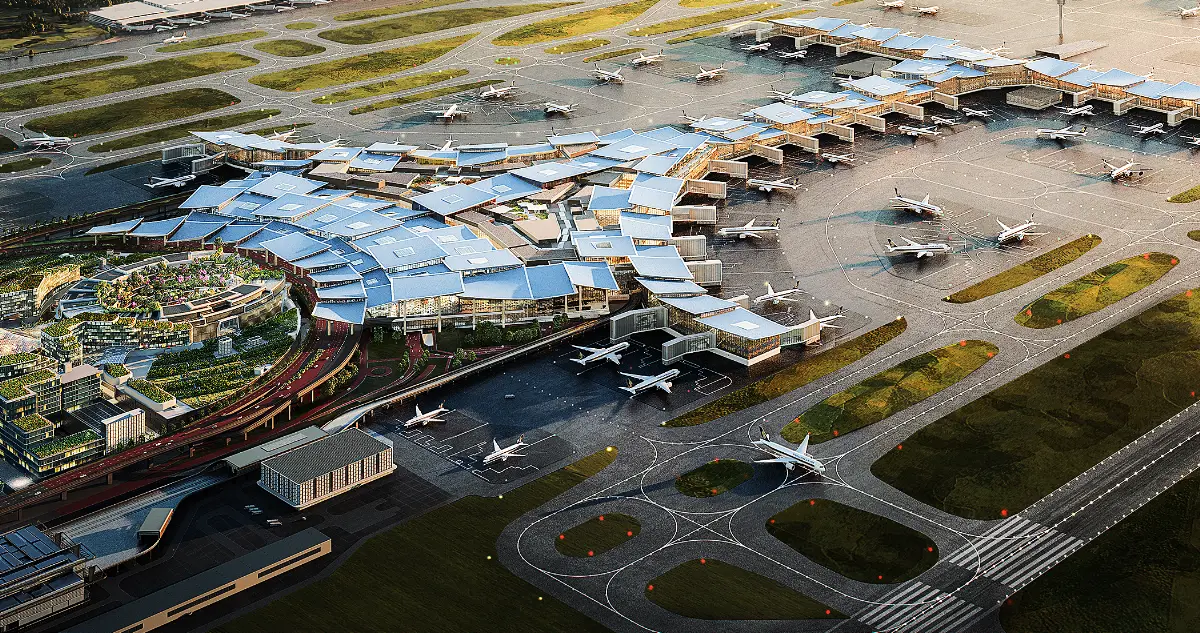
Singapore begins construction of mega Terminal 5 at Changi Airport
It will double its capacity, reaching 50 million passengers per year by mid-2030 - VIDEO

The Prime Minister of Singapore and Minister of Finance, Lawrence Wong, today officiated at the groundbreaking ceremony for Changi Airport Terminal 5 (T5), a mega terminal which will strengthen Changi Airport’s position as a leading air hub. Powered by state-of-the-art airport systems and extensive automation, T5 will allow airport to significantly increase its handling capacity, optimise operations and leverage new opportunities as travel demand continues to increase in the decades ahead. T5 will be linked to existing terminals at Changi Airport, so that the airport can operate as a single integrated air hub. It is designed to handle about 50 million passengers annually in its first phase which is expected to open in the mid-2030s.
With Asia-Pacific projected to be among the fastest growing air travel markets over the next two decades, the additional capacity at T5 will enable Singapore to ride on the long-term growth of aviation in the region and beyond. The Singapore Airlines Group, which currently operates across three terminals, will consolidate its operations under one roof at T5. There will also be room for other air carriers to expand their operations at T5 and Changi’s other terminals.
For the first time, T5 will see Changi Airport house a ground transportation centre, bringing together train, bus, taxi and other transport services. It will enhance Changi’s connectivity to the rest of Singapore, making the airport accessible not just for travel, but also as a destination for local residents to enjoy. Plans are in progress to extend both the Thomson-East Coast Line and the Cross Island Line to T5, to connect it to the city centre and other major hubs. T5 also offers the possibility of enhanced air and sea connectivity – for more seamless passenger travel, including convenient connections to neighbouring destinations via ferry services.
T5 will see extensive automation of both passenger-facing processes and back-end functions, powered by innovative technologies that are being trialled today for wider implementation by the time T5 opens. This will enable the airport to operate technologies at scale in a sustainable manner, with reduced reliance on manpower. In addition, T5 will be a Green Mark Platinum Super Low Energy building, which is more energy-efficient. It will be powered by more clean energy to reduce the carbon footprint of Changi Airport, and be equipped with building management systems that feature innovative and efficient systems design. The terminal’s rooftop solar system, which would be one of the largest in Singapore, can potentially generate enough energy to power up about 20,000 4-room HDB flats for a year.
Inspired by Singapore’s unique blend of nature and city, T5’s design concept is characterised by a unique collection of overlapping curved roofs with varying heights. The ‘roof leaves’ break the mega terminal building into smaller spaces that are more human scale. Combined with natural light and landscaping at appropriate spaces, the terminal will have the familiar cosy, yet uplifting, feel that Changi is known for. To make it easier for passengers to get around the terminal, travellators as well as an automated people mover (APM) system similar to the Skytrain will reduce walking distances. The walking distances in T5 will be comparable to Changi's current terminals. The APM network will also link T5 to Terminal 2, facilitating seamless transfers to the other terminals. T5 is also designed to be intuitive for wayfinding, with paths that lead passengers either to the boarding gates or the APM station, where trains will take them to their gates. Passengers will not need to rely heavily on signage to find their way around the terminal.
Its design work was paused in 2020 due to the Covid-19 pandemic and resumed in 2022. Incorporating lessons learnt from the global pandemic, T5 will have the flexibility to operate as smaller sub-terminals when needed to facilitate the management of high-risk passengers. It will also feature systems such as contactless touchpoints that can help to reduce disease transmission. It is located in Changi East, a 1,080-ha development which also includes the Changi East Industrial Zone (CEIZ), and the Changi East Urban District (CEUD). The CEIZ is aimed at augmenting Singapore’s position as a leading aircraft maintenance and integrated logistics and air cargo hub in the region, while the CEUD will serve as a vibrant business and lifestyle destination located at the doorstep of T5.
The video shows Prime Minister Wong during the groundbreaking ceremony; the images also show the progress of the works in the dedicated area and what Changi Airport will look like once completed:
AVIONEWS - World Aeronautical Press Agency